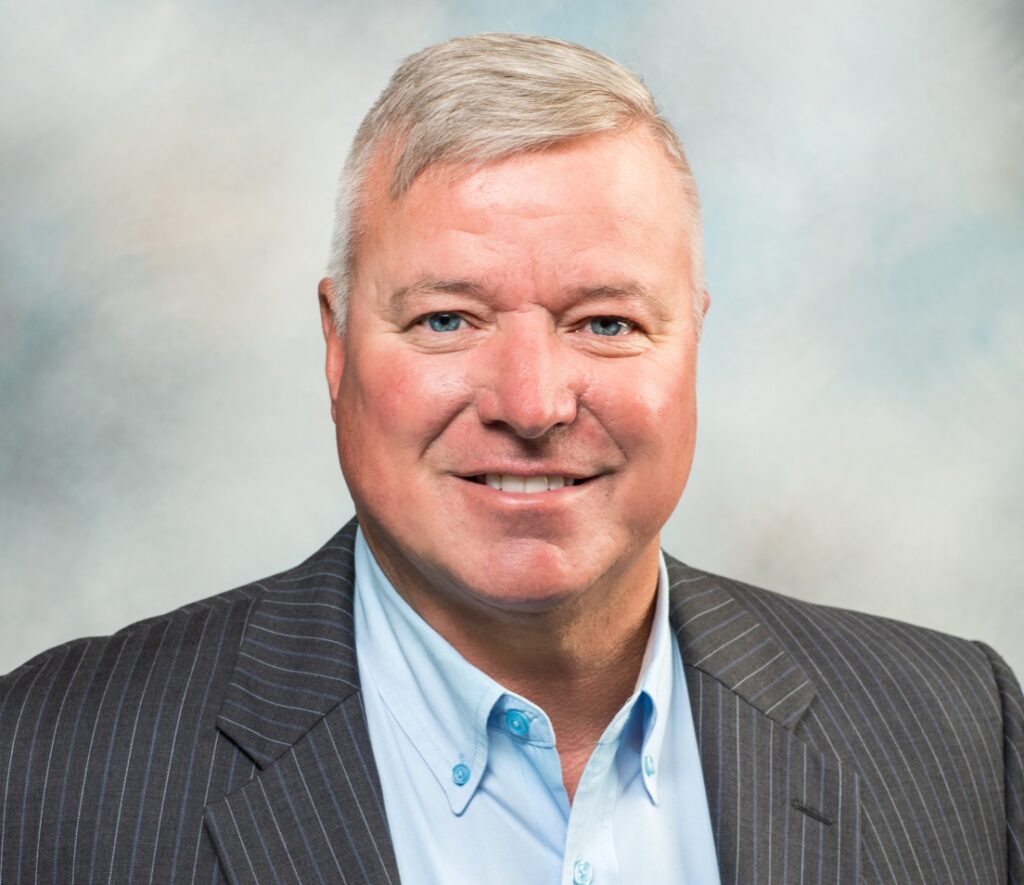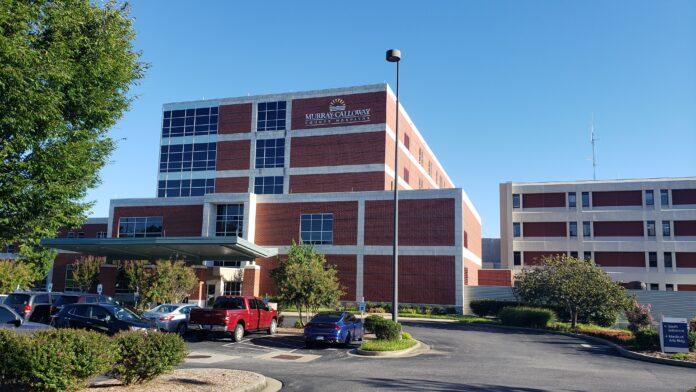MURRAY – Murray-Calloway County Hospital (MCCH) is in the midst of a baby boom. Administrators, who worked feverishly throughout the summer to be ready for a record number of deliveries expected over the next three weeks, were able to breathe a sigh of relief Monday as the hospital opened a new postpartum unit before the next anticipated wave.

“We’ve prepared for it just like we prepare for natural disasters,” CEO Jerry Penner said as he praised his staff for all their hard work during an interview last month. “We’re trying to do the right thing and thinking ahead, based on projections of what we think is going to happen. I just want to reassure the community that we’re prepared for this.”
MCCH administrators were able to forecast the exceptionally high number of deliveries through monitoring appointments in the obstetrics (OB) clinic. Preparations were underway long before Henry County Medical Center (HCMC) in Paris, Tennessee, announced plans at the end of May to close its OB unit in September. In fact, at the time of that announcement, deliveries at MCCH were already up 6.5% year-to-date.
In June, Chief Nursing Officer Jeff Eye told the MCCH Board of Trustees that the number of deliveries forecast in July and August was unprecedented. “With these types of numbers, if we would sustain them, that is a lot more babies than we have delivered… ever,” he said. “Even going back to when (the Murray Women’s Clinic) was still there, we’re going to far surpass our monthly number of deliveries that we typically do.”
Numbers started surging the first week of July when MCCH’s labor and delivery unit welcomed 16 babies to the world, nearly half the unit’s monthly average of 35-40 deliveries. In total, 47 babies were born last month. To accommodate that increase in volume, an additional labor nurse was hired and the hospital’s float pool nurses were trained to work in the postpartum unit.
Although delivery rates slowed to normal in the first two weeks of August – as of Monday morning, there had only been 16 deliveries – the end of this week marks the start of a two-week period during which the number of expected deliveries exceeds the hospital’s monthly average. To prepare for the impending surge, administrators not only had to ensure there will be enough staff, but also enough room. Simply put, the eight-room postpartum unit was not big enough for that kind of patient load.
Fortunately, space in the vicinity of the unit opened up when the radiation/oncology clinic moved into the new Regional Cancer Center last month. Interestingly, that area of the hospital, known as 2 West, was historically ward space – in fact, it previously housed the postpartum unit – but the floor was closed in 2013 due to low patient volumes.
“We closed 2 West down because the census had dropped and I didn’t want to have a minimal nursing staff for two patients; it wasn’t worth it for us,” Penner explained. “Then the idea came along in 2016 to take that and turn it into the oncology practice. Now, we’re taking it from clinic space back to ward space, so it’s come full-circle.”
Much work was needed to convert the clinic back into patient rooms, such as installing a new nurse call system and infant security electronics as well as re-routing the hospital’s medication dispensing system. Due to time constraints, aesthetic updates were not a priority, but the new 13-room unit has all of the necessary infrastructure to keep patients and their babies safe.
“I think it will give us some additional help on the back side of this,” Penner said. “We need to get back into the rooms that are currently postpartum and spruce those up a little bit because it’s probably been 14 years since they’ve been touched. We’re going to take advantage of the situation to continue to upgrade the hospital.”
Penner said there has also been talk about overhauling the entire labor and delivery deck. One idea is to equip rooms so that patients can labor, deliver and receive postpartum care in the same space, eliminating the need to transfer patients to a different room during their stay. “So, that is a concept to look into at some point in time,” he added.
The timing as well as the scope of any major renovation projects could depend on a few factors, but it is really a numbers game. OB units are typically not lucrative for hospitals, largely because regulatory requirements prescribe high minimum staffing levels be maintained regardless of the number of patients in the unit. Penner said that MCCH has to have 600 deliveries a year in order for the unit to break even; however, for several years, MCCH has delivered around 450-500 babies annually. Last year, there were 466.
“The balancing act has been that if the numbers are gonna continue to decline where they have been, is it cost effective for us to do that? Do we want to invest that much money?” Penner asked. “Whereas the cancer center is an example where we’ve just been exploding with the prevalence of cancer in this area. I’m seeing 1600 cancer patients a year. Does it make sense to make that investment for the cancer center? The answer is yes.
“But now we’re going the opposite direction with OB – where, here I was back in 2011, 2012 with 660 deliveries, now we’re down to 460 – does it make sense to go that direction and make that sort of investment there if that’s going to continue to be the trend?”
One factor is whether the baby boom is indicative of an upward trend in birthing rates in Calloway County or just an anomaly. Penner cited census trends showing modest growth in population and pointed to continuing growth in the industrial sector and for both local school districts as possible indicators that this baby boom could be more than just a blip.
Another factor, one that stands to have a more considerable impact on OB services at MCCH, is the closure of HCMC’s OB unit, which averages 25-30 deliveries per month. When it closes, patients will have three options from which to choose: West Tennessee Healthcare Volunteer Hospital in Martin, Tennessee, which is 45 minutes from Paris; Jackson-Madison County General Hospital in Jackson, Tennessee, which is an hour and 20 minutes away; or MCCH, which is less than 30 minutes away.
That may seem like an easy choice – go to the closest. But around 75% of HCMC’s OB patients are insured through TennCare, the Tennessee Medicaid program; for them, crossing the state line is not an option. They will have to travel to Martin or Jackson. For those with private insurance or who are self-paying (which translates to five or six deliveries a month, according to Penner) there are no barriers to receiving services at MCCH.
“Do the math,” Penner said. “If you get five, or six, more times 12, that’s another 60-72 babies we’re adding; now we’re up from 460 to 530. Alright, we’ve got to start thinking about how we would be able to maintain that.”
The setup is good in theory; the reality, however, is fraught with problems. An uptick in unexpected, non-emergency deliveries from Henry County is anticipated. Penner said that is a problem because, as a Kentucky hospital, MCCH cannot get paid for providing services to TennCare patients; however, if a TennCare patient arrives in active labor, the Emergency Medical Treatment and Labor Act requires MCCH to provide care.
“The problem with that one is that the doctors have never seen them,” Penner said. “They have no prenatal history on this woman, just not a clue. The safety on that is ridiculously bad. They have no idea if they’re preeclamptic, if they’ve got gestational diabetes; you just don’t know all those things that (could put that mother at risk) that you should know before they walk in the door. That’s a problem.”
It is a scary situation, Penner said, not only because it is not safe for the patient but also because it puts both the hospital and the provider at significant risk.
Another concern is that, by virtue of proximity, OB emergencies from Henry County will be transferred to MCCH. That brings an entirely different level of planning. Perinatal Services Director Leanna Jackson said that she and MCCH obstetrician Dr. Karla Turley worked with the emergency department to ensure it has all of the resources necessary for OB emergencies and to streamline internal processes regarding transferring patients between units.
“An OB emergency is an all-hands-on-deck (emergency); you’ve got two people that you’re worried about,” Jackson said. “So, we’re just trying to make sure we have everybody prepared. It doesn’t happen a lot in our community, but there are times when we have an emergency like that, and we all have to work together and pull together.”
Jackson also acknowledged that it is possible that the added burden of having to travel outside of Henry County for OB services could prevent some patients from receiving adequate prenatal care, increasing the likelihood of an OB emergency occurring.
To mitigate these concerns, Penner reached out to the Kentucky Hospital Association (KHA) for assistance in securing a waiver that would allow MCCH to be paid for providing OB services to TennCare patients. While such a waiver is unprecedented, Penner is hopeful that KHA can negotiate an agreement that will accommodate this unique situation that has the potential to be a financial drain for MCCH.
“If we can get the deal,” Penner said, “if all of a sudden, TennCare says, ‘OK, we’re going to create a waiver, a carve-out, and Henry County patients can go to Murray-Calloway, since (it is) the closest, and we’ll pay you for those;’ that’s fine. But if they’re not going to pay us for them, once again, it just digs a hole deeper for me.”
If an agreement with TennCare can be reached, Penner anticipates most OB patients in Henry County will come to MCCH instead of traveling to Martin or Jackson. That would push the hospital’s annual delivery rate over 700. At that level, MCCH would be forced to expand its OB service.
“That puts me from the 460 (we’re) at now to over 600 (the break-even threshold); that’s great,” Penner said. “We need more staff; we need more rooms; we need more nursery space; we need to think about waiting space. There’s a gamut of things that are going to precipitate us being into a different realm than we’ve been in the last now, probably 7, 8, 9 years – in that 450-460 range.”
The bottom line is changes are in store for the OB unit at MCCH. Whether that will be a mere sprucing up or a complete overhaul, only time will tell.
“So, we’ve just got to look at the numbers to see where we’re going,” Penner said. “But this whole Henry County dynamic could change the balance of what our responsibilities are because we are the closest.”



